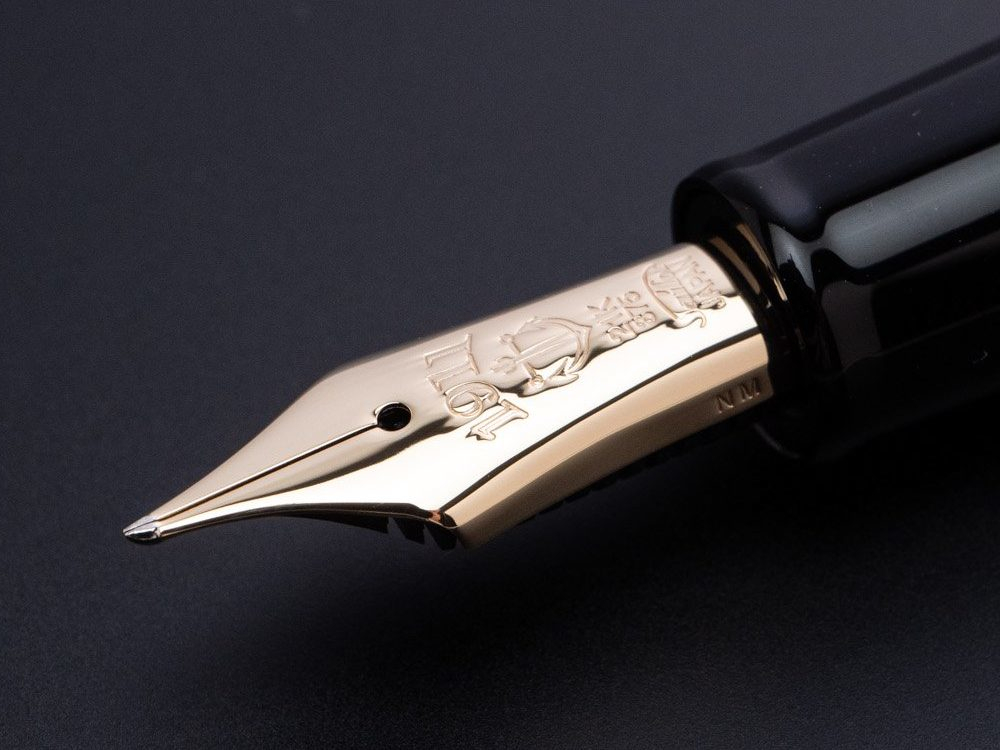Fountain pens like any other tool, require maintenance and care to function properly. Cleaning your fountain pen is an essential part of this maintenance process. What is the importance of cleaning your fountain pen, and what are the challenges of cleaning different types of ink. Also what are the benefits, if any, of using ultrasonic cleaners.
- Why Clean Your Fountain Pens?
- Different Inks, Different Challenges
- How to clean your fountain pen
- Using Ultrasonic Cleaners
- Cleaning your fountain pen

Why Clean Your Fountain Pens?
One of the most critical reasons to clean your fountain pens is to maintain their performance. Fountain pens are designed to use liquid ink, which is stored in a reservoir or converter. If the pen is not cleaned regularly, the ink residue can build up in the nib and feed, leading to clogs and poor ink flow. This can result in the pen not writing correctly or even drying out entirely.
Another reason to clean your fountain pens is to prevent ink contamination. Different types of ink can interact with each other, leading to unintended colors or even damage to the pen's internal parts. For example, mixing iron gall ink with other inks can cause corrosion of the pen's metal components.
Different Inks, Different Challenges
Cleaning fountain pens can be more challenging for some inks than others. For example, some inks, such as pigment-based inks or iron gall inks, dry at different rates than other inks. These inks can leave behind more residue and can be harder to clean unless they are cleaned more frequently.
Most modern pigment inks contain micro-particles and are safer the older generation of pigment inks, some of which can contain large particles that can clog the pen's nib and feed. When using pigment inks it is wise to clean them regularly so that they do not lead to significant performance issues.
How to clean your fountain pen
Step 1: Disassemble the pen before cleaning your fountain pen, it is essential to disassemble it completely. This involves unscrewing the barrel, removing the ink reservoir or converter, and separating the nib and feed from the grip section.
Step 2: Flush with water once the pen is disassembled, you can begin the cleaning process. The first step is to flush the pen with water. Fill a small container with cool or lukewarm water, and then submerge the nib and feed in the water. Use a bulb syringe or gently squeeze the converter or reservoir to force water through the pen. Repeat this process several times until the water runs clear.
Step 3: Soak the nib and feed after flushing the pen with water, you can soak the nib and feed in water for a few minutes. This will help loosen any stubborn ink residue that may be stuck in the pen. Make sure the nib and feed are completely submerged in the water during this step.
Step 4: Clean the grip section while the nib and feed are soaking, you can clean the grip section of the pen. Use a soft cloth or cotton swab to wipe away any ink residue or dirt that may have accumulated on the section. Be gentle and avoid using harsh chemicals or abrasives that can damage the pen.
Step 5: Rinse and dry once you have finished cleaning the pen, rinse all the parts with clean water to remove any leftover cleaning solution or residue. Use a soft cloth or paper towel to dry each part thoroughly, making sure that there is no moisture left on any of the components.
Step 6: Reassemble the pen once all the parts are dry, you can reassemble the pen. Make sure that all the components are screwed in tightly to prevent any leaks or performance issues.
By following these steps and cleaning your fountain pen regularly, you can ensure that it continues to perform at its best and provide you with a smooth and enjoyable writing experience.
Using Ultrasonic Cleaners
One way to make the cleaning process easier is to use an ultrasonic cleaner. These devices use high-frequency sound waves to create tiny bubbles in a cleaning solution, which then implode, releasing energy that helps remove dirt and ink residue. Ultrasonic cleaners can be very effective at cleaning fountain pens, particularly those with stubborn ink buildup.
However, for most fountain pen users, simply flushing the pen with water is sufficient. Flushing the pen involves filling the reservoir or converter with water and then running it through the pen until the water runs clear. This process should be repeated several times, and the pen should be dried thoroughly afterward.
Cleaning your fountain pen
Cleaning your fountain pens is an essential part of maintaining them and keeping them usable for years. Different types of ink can present different challenges when cleaning, but most pens can be cleaned effectively with water. Ultrasonic cleaners can be useful for stubborn ink buildup, but they are not necessary for most users. With regular cleaning and maintenance, your fountain pens will provide you with years of reliable performance and writing enjoyment.